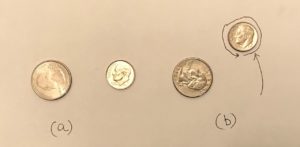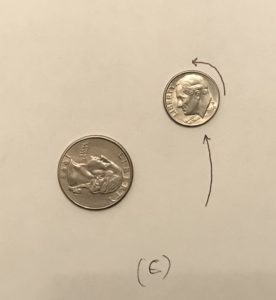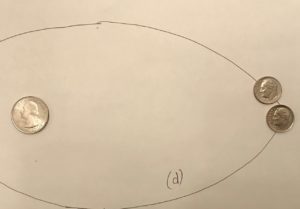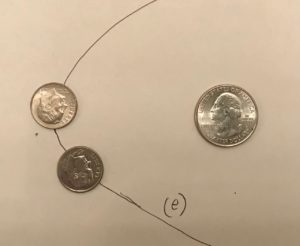Perihelion Day
The Earth’s orbit is an ellipse, not a circle; the distance to the sun is 91,401,983 miles at perihelion, which occurs this January 3 (well, 10:35 PM on the 2nd, in Mountain time zone), and 94,507,803 miles at aphelion, which occurs early July. 1 Everybody knows this. So what is this nonsense about January 3rd being the longest day of the year? Isn’t that the Summer Solstice, June 21st?
What is a day?
If someone asks you “how long is a day”, you are likely to answer “24 hours”. That is a full solar day, the time between noon one day and noon the next. 2 When you talk about the “longest day” being June 21st, you really mean “the longest time between sunrise and sunset”. This is a very different meaning of the word “day”. Perihelion Day has the longest solar day.
But we just said that a day is 24 hours! How can that be longer on one day than on another? Is the Earth’s rotation speeding up and then slowing down? 3 4 5
Diagram time.

A shows the Earth , Franklin D, on one random day; it is noon, with Franklin looking straight at George (the Sun). B is one day later, and Franklin has moved a bit (exaggerated for effect) around George, and has rotated one full rotation relative to the rest of the Universe, ie the stars. But notice: Franklin is no longer looking straight at George! In other words, Franklin has done one full rotation, but on Franklin’s world, noon has not arrived yet. 6

Franklin will need to rotate a little more than one full rotation before he is looking straight at George again. Now he has completed one solar day! But he has done more than one full rotation.
So what?
So a solar day is longer than a sidereal (measured relative to the Universe) day. This difference averages about 4 minutes a day. The mean solar day is 24 hours; the sidereal day is 23 hours 56 minutes. 7
So how do we get from there to the longest day being at perihelion? If the Earth’s orbit were a circle, all the solar days would be equal, but it is not a circle: it is an ellipse.

Again, this is exaggerated, but notice again how Franklin needs to rotate a little extra to reach solar noon. This picture, D, is aphelion, in July.

Notice how much further Franklin needs to rotate in E, representing perihelion in January. Not only does the Earth go further around the Sun in a day’s time because of the angle (due to being closer), but we are literally traveling faster, by about 1 km/second.
The result: solar days at perihelion are about 30 seconds longer than mean solar days, and solar days at aphelion are about 30 seconds shorter than mean solar days. This may not sound like much, but over, let’s say, 2 weeks, this is 7 minutes that your clock (which only shows mean solar time) differs from true solar time!
So get ready to celebrate perihelion day…the longest day of the year!
- July 6, this year.
- “Noon” being defined as the instant that the Sun is due South at your location.
- You may have guessed that it is not, except for some very slight changes; for one thing, if the Earth really did speed up and slow down its rotation significantly, the oceans would slosh in their basins, and fault lines would open up drastically.
- You may have heard of the “leap-second”; this is a correction that is added to the calendar occasionally to compensate for very slight changes in the Earth’s rotational period.
- Maybe someone can tell me this: as the polar ice caps melt, and megatons of water move toward the equator, does this slow the Earth’s rotation measurably, like a figure skater extending her arms?
- Franklin has completed one sidereal day (sie-dare-ee-al), which is to say, relative to the stars.
- There are 365 (approximately) solar days in a year; there are 366 sidereal days in a year (the 4 minutes, times 365, makes up the extra day). If you think about it, that makes perfect sense; Earth rotates 365 times relative to the Sun’s position, but “picks up” an extra rotation by virtue of having done a full orbit around the Sun.

This is hard-core “geek” and very well done. Fun. Thanks.